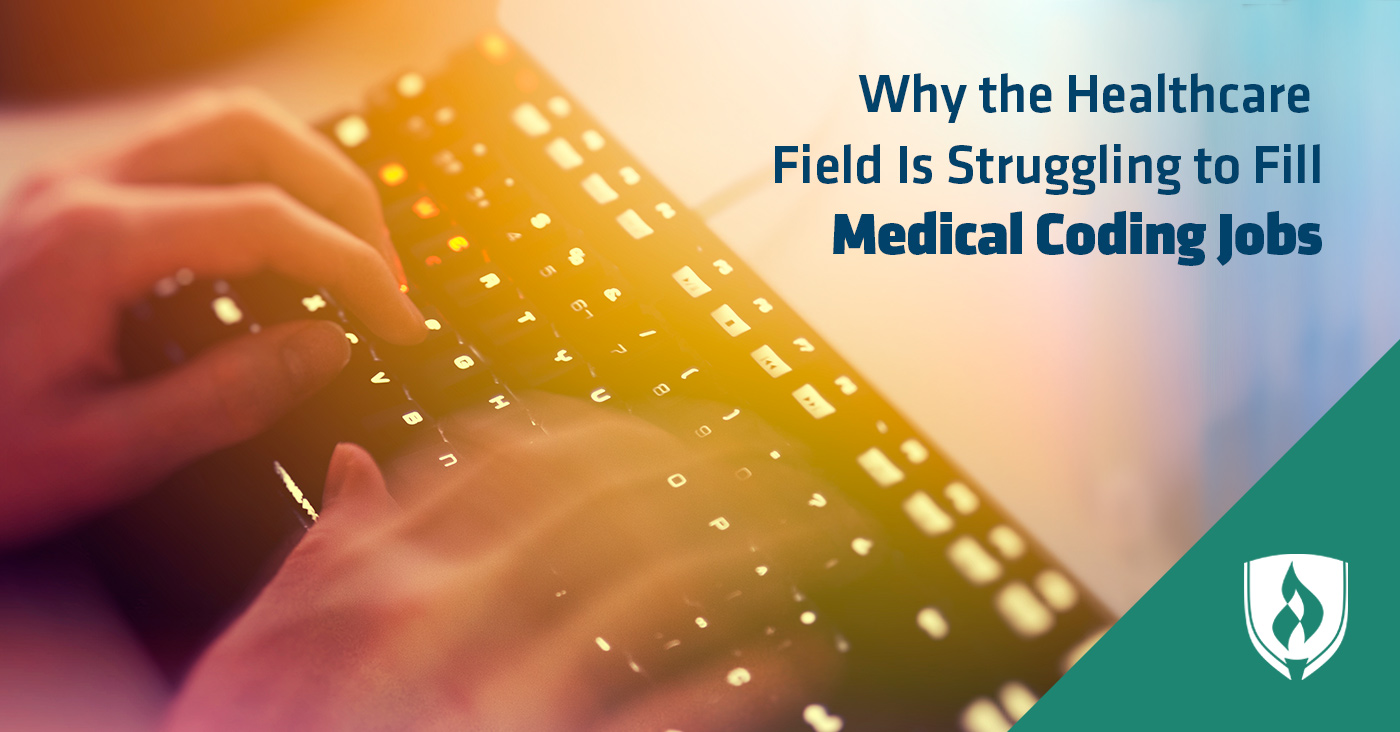Why the Healthcare Field is Struggling to Fill Medical Coding Jobs
By Jennifer Russon on 03/16/2015

It’s true that the healthcare industry is changing in dramatic ways. But those changes, brought on by healthcare reform, an aging U.S. population and cutting edge technologies bode well for medical coders—their career outlook is bright! A student on track to earn a medical billing and coding certificate is poised to benefit from the 22 percent employment surge projected by the Bureau of Labor Statistics (BLS).
Now that we’ve got your attention, let’s look a bit deeper into the field of medical coding. Why is it in demand? What does this position entail? How can you take advantage of the exciting opportunity? Keep reading to find the answers to all of your burning questions.
Why are medical coders in such high demand?
The simple answer is: ICD-10!
The federally-mandated switch from ICD-9—the current, 36-year-old system used for coding diseases, diagnoses and clinical procedures—has led to a shortage in medical coders. Implementation of the 10th revision of the International Statistical Classification of Diseases (ICD-10) was extended past its original deadline of fall 2014 until Oct. 1, 2015.
FACT: Medical coding jobs are projected to increase by 22 percent through 2022.*
This gives healthcare professionals a head start in getting adequate training for these advanced jobs. Hospitals are preparing for a smooth transition in order to prevent deep revenue losses. They are also working hard to avoid outsourcing work to coding professionals overseas.
So, what else could be driving demand for medical coding specialists? Current medical billers are navigating a huge learning curve! Transitioning from the 17,000 codes of ICD-9 to the 140,000 codes of ICD-10 is quite a jump. In fact, coder productivity is expected to drop 50-70 percent upon the arrival of ICD-10. Employee turnover is expected to rise also, as some will opt to retire rather than adapt to the new system.
What do medical coders actually do?
Put simply, a medical coding specialist’s job is as follows: He or she translates all of the details of a patient’s record into codes used by insurance companies to determine how much they reimburse a doctor's office or hospital.
Coders are crucial to their healthcare employer’s bottom line. In a recent article, two Missouri-based health firms described their earnest recruiting practices. They explained that they’re incentivized to offer medical coders retention bonuses in an effort to alleviate the looming shortages.
TrustHCS intends to double its medical coding workforce over the next 12–18 months and “contract out” medical coders to do work for hospitals and doctors' offices. When you contract out as a medical coder, it means you can work from home, an appealing option for those who lead busy family lives or simply want to work on their own terms.
What training is needed to become a medical coder?
You will need a post-secondary certificate to enter the medical coding field, along with a professional certification. Becoming a certified medical coder requires a variety of coursework in physiology, anatomy and pharmacology. The courses are affordable, offered online and can be completed in less than one year.
The medical coding certification fee can be between $1,000 and $2,000.
FACT: Productivity among medical coders is projected to decrease 50-70 percent upon the arrival of ICD-10.
One way the American Health Information Management Association (AHIMA) is attempting to help coders achieve the prerequisite experience is through a paid apprenticeship program, which provides job candidates with a clearer career path, giving them in-hospital experience while also helping ease the costs. Students are also encouraged to fill out the free application for Federal Student Aid (FAFSA), which helps determine your eligibility for financial aid.
What does a medical coding career path look like?
Medical coders who have only worked in a doctors’ office typically earn less than those who have worked in a hospital coding records ranging from pediatrics to orthopedics to oncology. Experienced coders can increase their earning potential by becoming peer reviewers, then supervisors and eventually auditors.
Medical coders also have ample opportunity for career advancement in the healthcare industry. Your training and experience can be put towards a higher credential down the road if you so choose. For example, the credits earned in your online medical coding program can be applied toward an associate degree in health information technology (HIT), or a bachelor’s degree in health information management (HIM).
Some positions you could pursue in HIT are: health information technician, medical billing specialist or clinical documentation specialist. Some common HIM careers are: patient information director, quality management coordinator or medical practice manager.
Take the first step towards a promising career in healthcare
Medical coding jobs are a perfect stepping stone towards a long, rewarding career in healthcare. The upcoming changes in the world of medical coding mean there is no better time than NOW to get your foot in the door.
Remember, you can earn your certificate in as little as nine months. This means you’ll be entering the field just in time to help fill the deficits caused by the ICD-10 switch. If you’re ready to take advantage of this golden opportunity, learn how you can become a certified medical coder online.
*Bureau of Labor Statistics, U.S. Department of Labor, Occupational Outlook Handbook, [information accessed February 2015] www.bls.gov/ooh/. Employment conditions in your area may vary.




